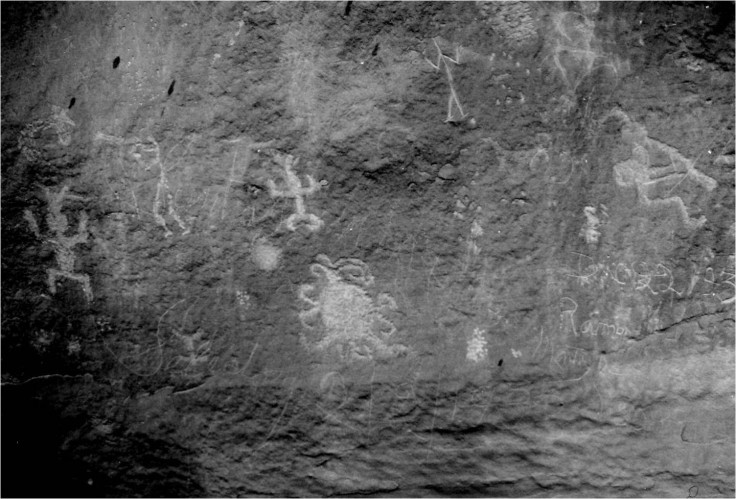Mysterious rock art in Chaco Canyon could show an ancient total eclipse of the sun
Were ancient Puebloans trying to record and celebrate a historic solar eclipse?

An eclipse that happened 1,000 years ago may have been immortalised in petroglyphs at Chaco Canyon, New Mexico.
The swirls extending from a central circle are a depiction of the sun's corona, said astrophysicist J. McKim Malville of the University of Colorado, Boulder, who discovered the petroglyph in 1992.
"To me it looks like a circular feature with curved tangles and structures," said Malville.
"If one looks at a drawing by a German astronomer of the 1860 total solar eclipse during high solar activity, rays and loops similar to those depicted in the Chaco petroglyph are visible."
The corona is at its most visible during a total solar eclipse. One such eclipse occurred over the region on 11 July 1097. At this time, the ancient Puebloan people lived in the region, and were creating rock art celebrating celestial events.
The sun was particularly active during this period, suggesting that its corona would have been particularly visible, according to data from ancient tree rings. The rings recorded the amount of cosmic rays reaching the Earth, affecting the bark's carbon-14 composition. The less carbon-14, the more sunspots and the more solar activity.
This data also tied in with eye-witness accounts from China, which date back for many thousands of years in China, Malville said.
The stone hosting the petroglyph is known as 'Piedra del Sol', Stone of the Sun. A separate petroglyph on the stone marks the days coming up to the summer solstice. It's thought to have been used as a way to count down to the solstice for rituals and festivities held at that time.
If the sun engraving is indeed one marking a total eclipse, it makes it a very rare find.
"This possible eclipse petroglyph on Piedra del Sol is the only one we know of in Chaco Canyon," Malville said.
"I think it is quite possible that the Chacoan people may have congregated around Piedra del Sol at certain times of the year and were watching the sun move away from the summer solstice when the eclipse occurred."
© Copyright IBTimes 2025. All rights reserved.





















